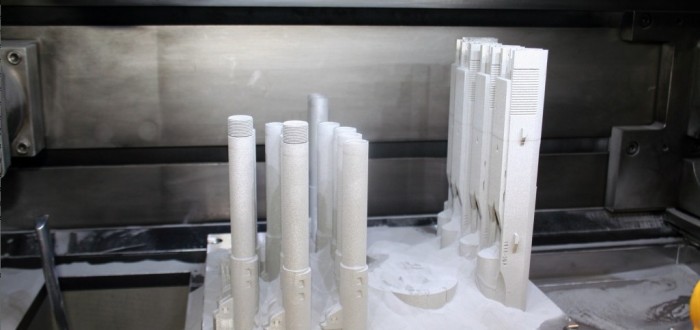ARES Director N.R. Jenzen-Jones has authored a chapter in a newly released Small Arms Survey paper examining the impact of new technologies in the firearms industry. Mr. Jenzen-Jones’ chapter focuses on the use of additive manufacturing techniques (3D printing) in the firearms industry, the technical merits of the various processes and products, and the associated legal and law enforcement challenges.
Mr. Jenzen-Jones spoke last year on behalf of the Small Arms Survey at a side event of the United Nations General Assembly (UNGA) First Committee, hosted by the German government, in a session addressing these new challenges. He also presented on the topic to an Organisation for Security and Co-operation in Europe (OSCE) Plenary Meeting, and before an Australian Senate Public Hearing.
Some excerpts from the chapter are below:
Understandably, the advent of a new technology in the arms manufacturing industry has caused various stakeholders some consternation. Law enforcement agencies, policy-makers, manufacturers, and users each have their own concerns regarding the implications of the technology. Some of the advantages of 3D-printing processes may also pose concerns for the development and application of national legislation and international instruments. Governments may seek to examine their national legislation in light of the advent of 3D-printed weapons, components, and accessories, and will require a thorough understanding of the technical and legal issues at hand in order to do so.
…
The open source community has been quick to adopt the design and manufacture of polymer 3D-printed firearms and components, as polymers are significantly cheaper and more readily accessible to hobbyists, craft producers, and small businesses. Computer-aided design (CAD) files for various firearms and components have been available since the early 2000s. As expiring patents and technological developments are leading to more affordable 3D printers, amateur-built 3D-printed firearms are increasingly common.
…
The first viable firearm produced using a 3D printer appeared in early 2013. The ‘Liberator’ handgun is entirely plastic—except for a metal firing pin, typically a nail (see Image 2). It is a turn-off barrel, single-action, single-shot .380 Automatic Colt Pistol (ACP) calibre handgun designed by ‘HaveBlue’ of the DefCAD forums (DefCAD, n.d.) and named after a conceptually similar progenitor dating from the Second World War.
…
Rapid advances in 3D-printing technology and its increased application to the manufacture of firearms and firearms components raise a number of legal, normative, and law-enforcement questions. Although many national governments have highlighted the issue, as have regional and international bodies such as the Organization for Security and Co-operation in Europe (OSCE), very few reports on the matter have been compiled or made publicly available. In general, national and international controls apply to 3D-printed firearms in the same way as they do to traditionally manufactured firearms, but the new technology will pose new challenges in the area of enforcement.
…
[W]hen the costs of purchasing or producing 3D-printed firearms are considered together with their operational limitations, traditional firearms purchased on the black market are likely to remain far more appealing to individuals and non-state armed groups for the foreseeable future.
The full version of Small Arms Survey Occasional Paper 32 Behind the Curve: New Technologies, New Control Challenges can be read here.

